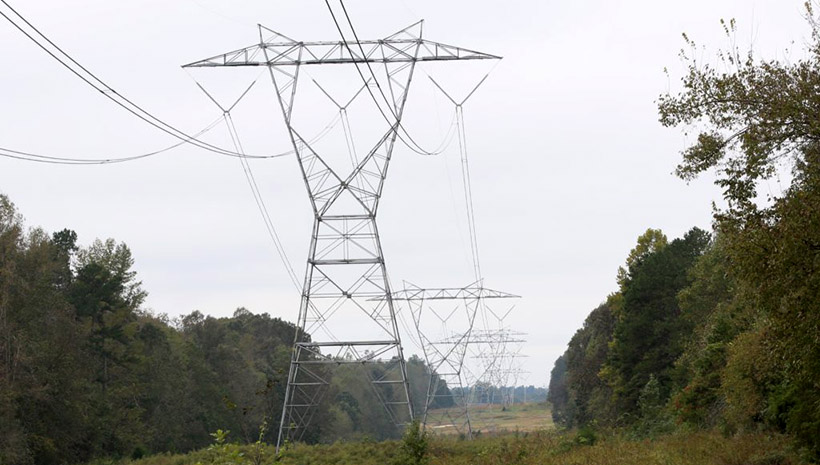Publisher's note: This post appears here courtesy of the Carolina Journal, and written by Jon Sanders.
Photo: Don Carrington/Carolina Journal
Energy poverty is a serious issue. Research shows that
higher energy prices cost lives. In 2018 the U.S. Energy Information Agency showed that
one in three families struggled to pay energy bills, and one out of every five families had to forego food or medicine to do so.
That same year, Bjorn Lomborg wrote in
The Wall Street Journal that, "One careful study of energy usage in North Carolina found that a lower-income family might spend more than 20% of its income on energy."
Energy poverty will be worse in the post-COVID economy. Electricity is a basic human need. That's why
state law required "adequate, reliable and economical utility service to all of the citizens and residents of the State" and "the least cost mix of generation and demand-reduction measures which is achievable." That was the standard:
least-cost, reliable electricity.
Regardless, N.C. policymakers have been making expensive decisions in energy policy for years. That was bad enough when times were good. Now it's worse.
Our poor electricity consumers especially need decisive actions to restore the standard of least-cost, reliable electricity. Here are several ways to do that.
Let PURPA contract rates to qualifying renewable energy facilities vary according to market conditions every one to two years, not be fixed for 10 years
Because of how North Carolina interprets the Public Utility Regulatory Policies Act of 1978 (PURPA), the state requires the
highest rates and the longest contracts (10 years at fixed rates) in the Southeast for solar energy.
Research from the Edison Electric Institute in 2019 estimated that Americans are having to pay
$2.7 billion more for solar power because of PURPA contracts forcing utilities to buy solar power above the competitive market rate for solar power.
Sixty percent of the nation's PURPA-qualifying solar facilities are in North Carolina. So we've got well over half the nation's high-cost solar facilities, and we give them the region's longest contracts fixed at the region's highest rates? The math for N.C. energy consumers isn't pretty.
Place a moratorium on new solar and wind facilities and incentives until further study
New solar and wind facilities are expensive. They're not efficient or
reliable. They're well over twice as expensive as existing natural gas plants and
nearly three times more expensive than existing nuclear power plants. But those are efficient and reliable and don't create costly grid interconnection issues.
But aren't they critical to improving the state's environment? The unreported fact is, North Carolina's CO2 emissions from energy generation have
fallen dramatically all century as utilities have changed over
more to natural gas and nuclear generation. Solar's impact is too small to register.
Promote the retention of existing nuclear plants, which are least-cost, zero-emission sources of electricity
Despite North Carolina's two decades of falling energy emissions, Gov. Roy Cooper has developed a "Clean Energy Plan" in consultation with
164 "stakeholder" organizations. But out of all those groups,
only 7% considered "affordability" a value to prioritize in developing this energy plan.
That's not a good sign for N.C. energy consumers about to enter an economy wrecked by months of shutdowns — with
over a million new unemployment claims in fewer than two months.
In the next few years, Duke Energy will begin
seeking license renewals from the Nuclear Regulatory Commission to extend the lives of North Carolina's nuclear fleet. The last thing North Carolina energy consumers need is for state policymakers to cause power generation to shift to costlier sources and make nuclear seem expendable. (That would lead to
increased emissions, also.)
Consider: Japan and North Carolina used to get roughly the same proportion of energy from nuclear, but after the Fukushima Daiichi nuclear accident, Japan shut down all 54 of its nuclear power plants. Japan's electricity prices increased by as much as
38%. According to a 2019 National Bureau of Economic Research
Working Paper, that caused
more deaths than the nuclear accident.
Affordability in energy not "a value to prioritize"? To some, it is a matter of life or death.
Conclusion
As North Carolina enters the stark post-COVID economy, state law already has the right standard to keep energy poverty from becoming worse here than it otherwise would be:
least-cost, reliable power at the flip of the switch. State policymakers must take decisive actions to restore that standard. This is no time for special interests hawking inefficient, unreliable, expensive power.
Jon Sanders is director of regulatory studies at the John Locke Foundation.

